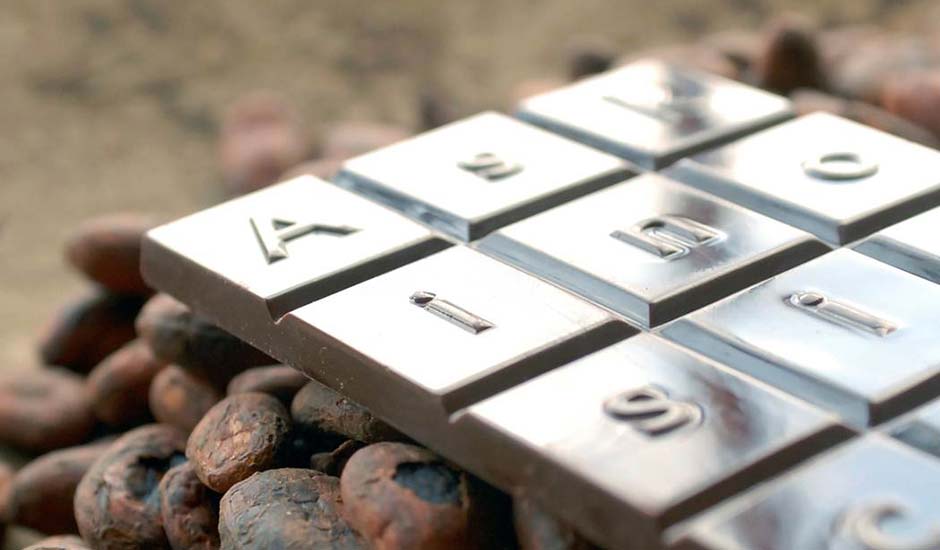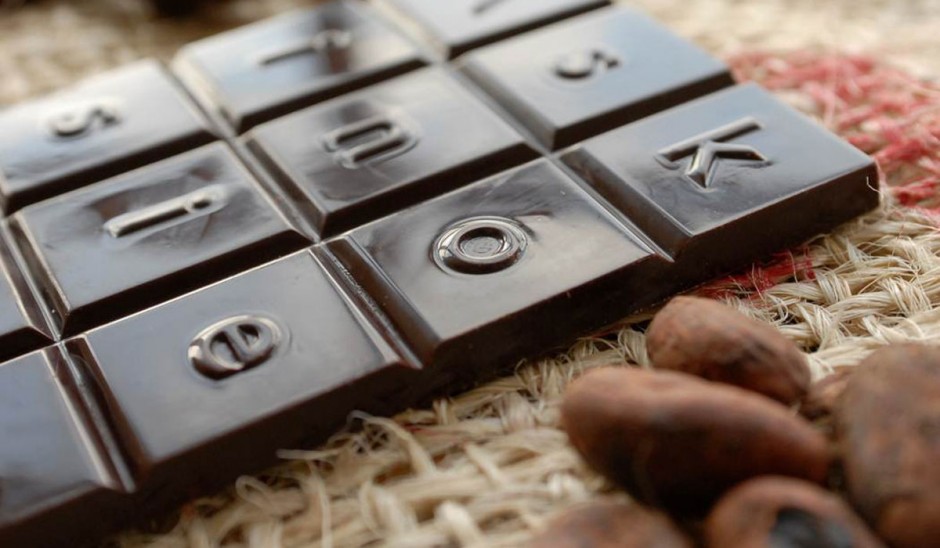The world's chocolate supply is in danger, and only science can save it. Chocolate industry experts predict that, barring drastic changes in production — or an inexplicable plummet in demand — cocoa, the key ingredient in chocolate, could run out by 2020.
But don’t panic. Yet.

This week Ed Seguine, chocolate aficionado and researcher, is bringing to Mizzou a delectable message of hope, coated in a call to action, during a Missouri Life Sciences Week talk titled "Chocolate Now and Future: Where demand, sustainability and flavor intersect." (He's also bringing chocolate samples, but we'll get to that in a minute.)
Seguine, the founder and president of Seguine Cacao Cocoa & Chocolate Advisers, has dedicated his career to advocating for the sustainability of the cacao crop and to perfecting the flavor of its treasured product, chocolate. While a research fellow with the Mars company, Seguine tasted as many as 12,000 cocoa samples a year. He also worked on a two-year collaborative project to sequence and annotate the cacao genome. The resulting Cacao Genome Database has been placed in the public domain so that government agencies, farmers and scientists, including the future savior of chocolate, can access and expand on the work.
Seguine hopes he can inspire Tigers to take up the cause.
Where Chocolate Comes from
To understand why chocolate is at risk, it's necessary to know its origins. Chocolate is derived from the cacao tree, which grows near the equator, exclusively in the very limited geographical area between the Tropic of Cancer and the Tropic of Capricorn. The sweet spot.
About 70 percent of cacao grows in West African countries, with the rest coming from Indonesia, Brazil, Ecuador and other warm places. Cacao trees produce pods, inside of which are beans. The beans are fermented, dried, roasted, pressed and turned into cocoa butter and cocoa liquor, which are then mixed with sugar (and usually other ingredients) to make chocolate.
The Problem(s)

Cacao grows very slowly. It takes about eight years for a seed to become a sexually mature tree ready to produce more cacao. So far, no one has figured out an effective way to speed up the process or to boost the number of beans each tree produces.
Scott Kelsey Askinosie, an MU doctoral student in biological sciences, is the director of science and technology at the Springfield, Mo., Askinosie Chocolate, a company founded by his father-in-law, Mizzou alumnus Shawn Askinosie. Cacao is an orphan crop, Askinosie explains. Unlike staple-food crops — corn, wheat, rice, soy — it gets little attention or financial support from agriculture experts devoted to increasing yield. A small problem, such as dry weather conditions in West Africa, can have a huge effect.
“There’s no infrastructure set up for cacao research,” Askinosie says. “There haven’t been any great technological strides in cacao growing."
Meanwhile, people want more chocolate. In populous countries with recently improved economies, such as China, India and Brazil, the middle class is growing rapidly, and its members are acquiring Western appetites, for burgers, fried chicken and, yes, chocolate.
From its small tropical home, growing at its leisurely pace, the delicate cacao tree can't keep up.
The Dark Side
While emerging chocolate lovers drive up demand, long-term consumers contribute to the cocoa shortage by indulging cravings for dark chocolate, a flavorful, antioxidant-rich specialty concoction hailed for its health benefits.
Most mainstream commercial brands of milk chocolate bars are only 5-10 percent cocoa; the rest of the bar is made of sugar, preservatives and stabilizers. The increasingly popular dark chocolate is 70-80 percent cocoa. Less sugar, more flavor.
According to the Wall Street Journal, consumers in the United States, Switzerland and the United Kingdom are eating more dark chocolate than ever before. With the surge in demand, since 2007 the cost of chocolate has increased by 45 percent.
What about white chocolate? Technically it isn't chocolate. It contains cocoa butter but no cocoa liquor or cocoa solids.
Inside the Factory
 There are no Oompa Loompas. High-quality chocolate production relies instead on scientists. When he joined the team at the Springfield factory, Scott Askinosie, calling on his organic-chemistry experience, worked with the production manager to refine the chocolate-making process. He pored over food-science writings from the 1960s and '70s, the apparent heyday of cocoa butter crystal lattice research. Much trial and error with heating, cooling, humidifying and dehumidifying ensued.
There are no Oompa Loompas. High-quality chocolate production relies instead on scientists. When he joined the team at the Springfield factory, Scott Askinosie, calling on his organic-chemistry experience, worked with the production manager to refine the chocolate-making process. He pored over food-science writings from the 1960s and '70s, the apparent heyday of cocoa butter crystal lattice research. Much trial and error with heating, cooling, humidifying and dehumidifying ensued.
Optimizing conditions is essential at Askinosie Chocolate, he explains, because the chocolate makers don't rely on preservatives, stabilizers or other chemicals. The product has only three ingredients: cocoa butter, cocoa liquor and sugar.
“There aren’t a lot of people making chocolate the way that we make chocolate," Askinosie says. "There’s a reason for that: It’s really hard.”
A poet emerges as the scientist describes chocolate tempering and the resultant textures, the sharp snap when a chocolate bar is broken, the cool rush when it's placed on the tongue and absorbs heat from the mouth.
Learn Stuff. Eat Chocolate.
Tigers can taste the fruits of Askinosie's labor at Ed Seguine's talk, held at 3:30 p.m. Thursday in Monsanto Auditorium, Bond Life Sciences Center. Askinosie Chocolate samples will be served.
We'll also find out how to secure a bright future for the beloved cocoa bean. Seguine is looking out for us.
“Ed is not only a great research scientist but a great person," Askinosie says. "He believes in what he does. The guy eats, drinks, lives, sleeps, breathes chocolate. He really, really wants the world to always have chocolate, and he works harder than anyone I know. I think that’s really inspiring."




